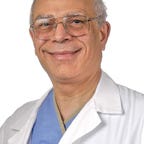Clostridium Bacteria
Clostridium is a gram-positive rod shaped bacteria (bacilli). Clostridium are spore forming and toxin producing obligate anaerobes. Clostridium form endospores under adverse environmental conditions. Spores are a survival mechanism. The main species of clostridium causing disease in humans are:
· Clostridium difficile: a condition associated with antibiotics causing diarrhea
· Clostridium perfringens: soft tissue infections (gas gangrene)
· Clostridium botulinum: botulism (food poisoning)
· Clostridium tetani: tetanus
Clostridium difficile is a part of the normal bacteria living in the intestine (colonic flora). It is also present in the environment in places such as soil, water, and animal feces. These spores survive well in hospital environments and is resistant to environmental factors and many disinfectants. Hand washing is prophylactic against infection. C. Difficle is transmitted by fecal-oral routes. These ingested bacterial spores survive the gastric acidity. In the intestine, spores germinate into vegetative form. In severe cases, Clostridium difficile toxins can cause pseudomembranous colitis, which is a severe inflammation of the colon. Healthy people don’t usually get sick from Clostridium difficile. It most commonly affects older patients in hospitals or nursing homes. This condition typically occurs after antibiotic therapy and is referred to as “antibiotic diarrhea”. This usually occurs after the patient takes broad-spectrum antibiotics such as: Clindamycin, Penicillins, Cephalosporins, and Fluoroquinolones. The intestine has hundreds of bacteria. Some have useful functions such as the stimulation of the immune system and the production of vitamins. Antibiotics will kill the bacteria in the intestines that are competing with the C. difficle, but the antibiotics do not kill the C. Difficle, making it easier for the C. Difficle to grow and secrete its toxins causing pseudomembranous colitis.
Sometimes, the bacteria change their structure through mutation. The new gene is called “strains” which is usually more resistant to antibiotics, making it harder to control the infection. Hospitalized people are more prone to infection due to their low immunity and the likelihood of antibiotic therapy. Clostridium difficile causes antibiotic associated diarrhea. In mild to moderate cases, there is a watery diarrhea, mild abdominal tenderness and distension. In severe cases it causes pseudomembranous colitis, which is the formation of whitish yellow plaques. This causes severe watery diarrhea and may progress to a life-threatening toxic Mega colon.
In regards to a diagnosis, a stool culture will show the bacteria. Enzyme immunuo assay EIA will show the toxins and a CT scan may be helpful in diagnosis as well.
Treatment for Clostridium difficile will consist of a different strand of antibiotics, typically oral metronidazole (flagyl) or an oral vancomycin. Probiotics such as bacteria and yeast that help restore the normal balance of the bacterial flora are beneficial. In some cases a fecal transplant may be necessary. With a fecal transplant, fecal matter from a healthy donor is place into the colon by colonoscopy. This is not a commonly used method, however it is gaining popularity. There is a fairly high incidence of relapse which can range from 20–50%.
Clostridium perfringens is anerobic gram positive spore forming rods. Clostridium perfringens are found in soil and are members of the normal gut flora. This strand of Clostridium produces harmful toxins that cause Gas Gangrene (Clostridium myonecrosis) which is caused by Clostridium perfringens alpha toxin and Clostridium food poisoning (enterotoxin).
Gas gangrene occurs due to wound infection of limbs (open fractures and extensive soft tissue injuries). Clostridium perfringens grow rapidly in ischemic tissues and anerobic conditions. These toxins cause tissue necrosis and produce gas gangrene. The gases form bubbles in the muscles (crepitus) and cause a characteristic foul smell due to the decomposing tissues. These toxins can enter the blood stream, causing damage to the organs and even death. This is a rapidly spreading infection that may require amputation. Gas gangrene is treated with surgery, antibiotics — intravenous penicillin and clindamycin, and with hyperbaric oxygen.
Clostridium botulinum produces a potent neurotoxin that causes flaccid muscular paralysis due to failure of neuromuscular transmission. In severe cases, extensive respiratory muscle paralysis leads to ventilator failure and death, unless supportive care is provided. There are different types of Clostridium botulinum:
· Foodborne botulism — caused by eating foods that contain the botulism toxin as in home canned food (canned fish or meat).
· Infant Botulism — intestinal botulism which is caused by ingesting spores of the bacteria which germinate and produce toxins in the intestines of young children. This is often associated with the ingestion of honey.
Treatment for Clostridium botulinum consists of antitoxin administration, supportive care such as: mechanical ventilation or parenteral nutrition, and elimination which could be induced vomiting and/or high enemas.
However, there is a therapeutic element to the botulism toxin. It is the main paralytic agent in Botox, which is used in many clinical applications. These applications include: spasticity eg. Cerebral palsy, strabismus, localized muscle spasms and pain, cosmetic use, and sweating disorders.
